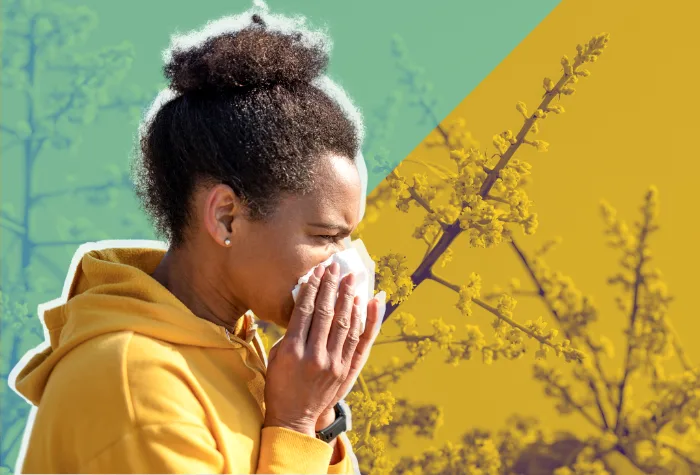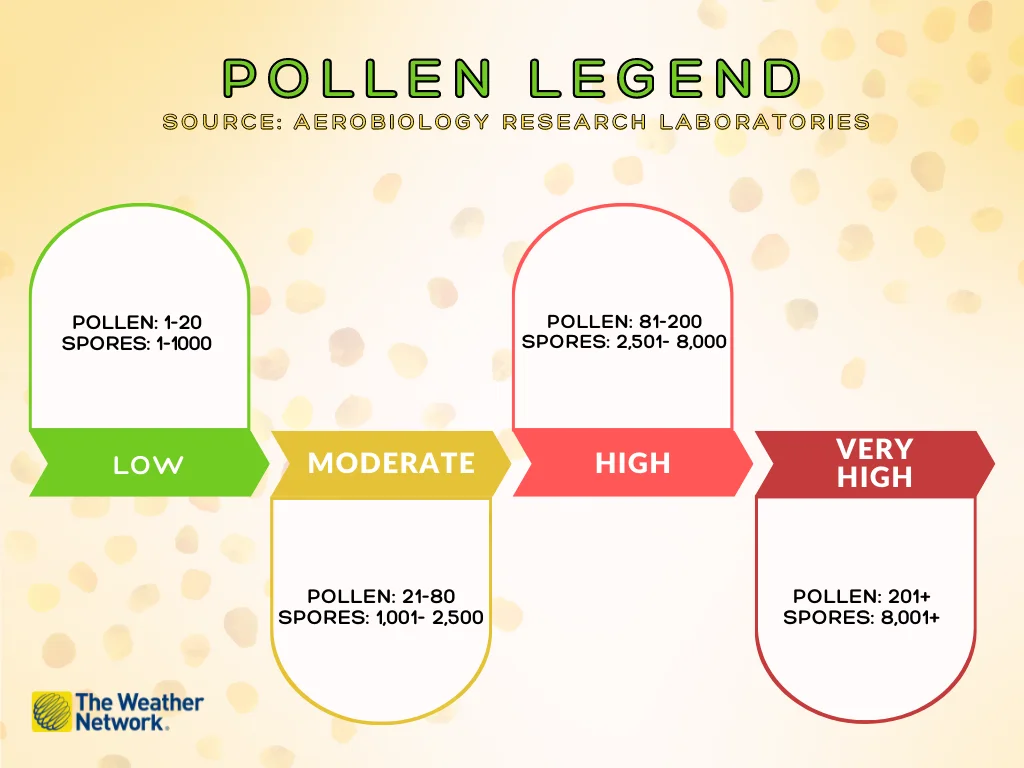
How do we know how much pollen is in the air, anyway?
Here's how the data for the pollen forecast is collected.
Pollen - microspores that create dust in the air. If you suffer from allergies, you're probably acutely aware of its existence. Individuals with sensitivities are subject to watery eyes, sneezing, and postnasal drip that can linger for weeks.
Pollen season lasts from April to October in Canada, with April and May being the worst for tree allergens and June and July the worst for grass pollens.
Ragweed season starts in August and typically lasts until October.
On its Facebook Page, Aerobiology Research Laboratories, the Ottawa-based pollen forecast provider for The Weather Network, says up to 9 million Canadians live with seasonal allergies, and upwards of 1 million dogs.
Sufferers have devised coping mechanisms, like using over-the-counter medications and avoiding outdoor activity when pollen counts are high.
Many also turn to the internet - looking up the Aerobiology pollen report on The Weather Network website.
"We have been collecting and analyzing pollen data since 1994," Aerobiology Research Laboratories director Daniel Coates tells The Weather Network via email.
"Most stations have 28 yrs of pollen and spore data.'
Forecast levels are determined from sample collections taken at 32 local reporting stations across Canada in population centres as big as Toronto and as small as Prince Albert.
"We choose locations based on population to serve and reach as many allergy sufferers as possible," Coates says.
The devices that collect pollen are little metal boxes, placed on poles about 1 metre off the ground so that samples are representative of the air that is inhaled. On the underside of the box sit removable rods coated in a sticky substance, like silicone, that pollen can adhere to. Once plugged in, the rods rotate and collect data.

A pollen collection station. On the underside of the device are two coated rods that rotate and capture spores in the air.
Every day, the samples are collected, replaced, and shipped to Aerobiology labs for analysis. Those samples are then stained and counted microscopically to determine the amounts of pollen and spores present, logged in grains per cubic metre.

"In order to have proper samples for analysis, we train our station administrators to properly collect samples at specific times every single day," Coates says.
"Sometimes we do have bad samples. Elements such as extreme rain or downpours can sometimes wash samples clean, but it is very rare."
Pollen on the rise across Canada
Coates likens pollen and spores to "business trends," where counts can be up one year and down the next, but overall, his lab has noted an overall increase in pollen nationwide over the past 22 years.
"We have also seen the migration of ragweed pollen over the last ten years into provinces like Saskatchewan and Alberta, where it had rarely been seen before. Numbers are still low in those provinces, but they are not declining."
VIDEO: The busier the road, the easier ragweed can spread
Factors influencing a heavy pollen count
Find yourself sneezing more than usual? It might be due to one or more of the following factors:
Warmer weather: "Pollen loves warm weather, and with longer warmer seasons we are seeing higher pollen counts," Coates says.
Less rainfall, particularly in the spring: "Rain washes pollen out of the air and can cause pollen to stick to wet trees instead of being released into the air."
Urban planning also plays a role. "A lot of cities like to plant male trees because they do not have flowers or fruits and are easier to maintain," Coates says. "The issue is male plants release pollen."
Ragweed increases with cool, fall weather.
Pollen avoidance strategies
"One of the best ways to avoid pollen is to check the pollen forecast on the Weather Network, and avoid exposure to those allergens," Coates says. "You can also check the Allergy Sufferers App that provides the full list of all pollen and spore levels in the air with a subscription."
Stay indoors on dry, windy days. Pollen counts are lowest after rain, which helps clear it from the air.
Skip the chores. Coates suggests allergy sufferers delegate lawn mowing, weed pulling, and other gardening chores that stir up pollen to people who don't have sensitivities.
Take a shower to rinse pollen from your skin and hair after spending time outside, and put on clean clothes.
Wear a face mask when doing outside chores on high pollen days.
Keep windows and doors closed on high pollen days.
Wraparound or oversized sunglasses can reduce pollen contact with the eyes.
Keep the windows and sunroof closed when in your car.
Invest in a HEPA air purifier and regularly maintain it.
Thumbnail: Custom by Cheryl Santa Maria, made using graphical elements from Canva Pro.











